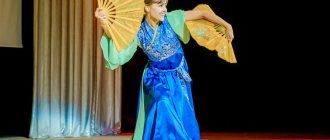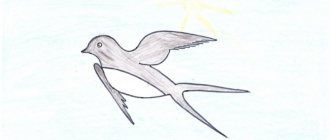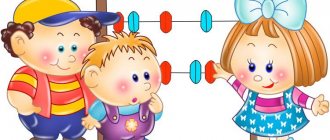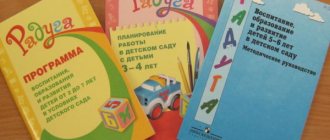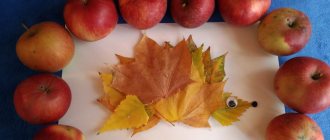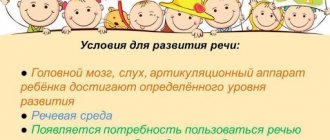Why is sand painting on a light table becoming so popular all over the world?
Currently, the need for new, non-standard ways of thinking has become increasingly felt in the world. The ability to find unexpected solutions and accept any situation as an opportunity to solve an interesting problem is becoming increasingly valuable. Companies spare no expense on training their employees; they conduct trainings to teach people to think creatively. But, unfortunately, teaching adults this ability is quite a difficult task.
No one doubts that the development of creative potential should begin from a very early age, when the child is just beginning to discover the world around him. Thus, one of the most important tasks for teachers, psychologists and parents at the present stage is an individual approach to the development of a child’s creative potential. In solving this urgent problem, the course “Art Therapy: Drawing on the Sand” can help you.
APPLICATIONS
Exercises to develop fine motor skills
"Storm"
Children perform movements with their fingers in accordance with the text: The first drops fell, (lightly tap two fingers of each hand on the table)
The spiders were scared. (the inner side of the palm is lowered down; bend the fingers slightly and, moving them, you should show how the spiders scatter)
The rain began to pound harder. (knock on the table with all fingers of both hands)
The birds disappeared among the branches. (cross your arms, place your palms together with the backs of your hands; wave your fingers clenched together)
The rain poured down like buckets, (knock on the table harder with all the fingers of both hands)
The kids ran away. (the index and middle fingers of both hands run across the table, depicting little men; the remaining fingers are pressed to the palm)
Lightning flashes in the sky,
Thunder breaks the whole sky. (draw lightning in the air with your finger) (drum with your fists and then clap your hands)
And then the sun comes out of the cloud (raise both hands up with fingers open)
He'll look out the window for us again!
"Flowers"
Children perform movements with their fingers in accordance with the text:
In our group on the window, (clench and unclench their fists)
In a green country, (show “pots” with palms)
In painted pots (palms raised vertically)
The flowers have grown.
Here is rosean, geranium, crassula,
Family of spiny cacti. (bend the fingers on both hands, starting with the thumb)
We will water them early in the morning (water from an imaginary watering can) (fold the palms of both hands)
Me and all my friends!
"Bell"
Children perform movements with their fingers in accordance with the text: - Don-don-don, -
The bell is ringing. (move the fingers of both hands)
- La-la-la, -
He says something. (raise the index fingers of both hands to your mouth)
Ding-ding-ding, -
Tilts his head. (put your palms down)
Bom-bom-bom, -
I messed up my whole hair. (run your hands through your hair)
Ding-ding-ding, -
He smiled at the sun. (smile and clap your hands)
Finally woke up. (tap the fingers of one hand on the fingers of the other)
Developmental kinesiological exercises
"Ring"
The child alternately and as quickly as possible moves his fingers, connecting the index finger, middle finger, etc. in a ring with the thumb. The test is performed in the forward (from the index finger to the little finger) and in the reverse (from the little finger to the index finger) order. First, the exercise is performed with each hand separately, then together.
"Fist - rib - palm"
The child is shown three positions of the hand on the plane of the table, successively replacing each other. The palm is on a plane, the palm is clenched into a fist, the palm is edged on the table plane, the palm is straightened on the table plane. The child performs the test together with the teacher, then from memory for 8-10 repetitions of the motor program. The test is performed first with the right hand, then with the left, then with both hands together. When mastering the program or if there are difficulties in performing the exercise, the teacher invites the child to help himself with commands (“fist - rib - palm”), pronounced out loud or silently.
"Mirror drawing"
The child is asked to take pencils or felt-tip pens in both hands and simultaneously draw mirror-symmetrical drawings and letters on a blank sheet of paper with both hands. When performing this exercise, your eyes and hands relax. When the activity of both hemispheres is synchronized, the efficiency of the brain significantly increases.
"Ear - Nose"
The child, as shown by an adult, then independently grabs the tip of his nose with his left hand, and the opposite ear with his right hand. Simultaneously releasing his ear and nose, he claps his hands and changes the position of his hands “exactly the opposite.” The exercise is repeated several times.
"Horizontal Eight"
The teacher asks the child to draw the number eight in the air in a horizontal plane three times: first with one hand, then with the other, then with both hands at the same time.
"Symmetrical drawings"
The teacher invites the child to draw mirror-symmetrical designs in the air with both hands at the same time: a flower, a spruce, etc.
"Bear Jiggle"
The teacher invites the child to sway from side to side, imitating a bear. Then connect your hands and come up with a plot.
"Snowman"
The exercise is performed standing. The teacher invites the children to imagine that each of them is a just made snowman. His body should be tense, like frozen snow. But then spring came, the sun warmed up, and the snowman began to melt. First, the head “melts” and hangs, then the shoulders drop, the arms relax, etc. At the end of the exercise, the children gently fall to the floor and lie down.
"Let's pump up the muscles"
While sitting, children bend their elbows, clench and unclench their hands, gradually speeding up the pace. The exercise is performed until the hands are maximally tired. Then you need to relax your hands and shake them.
"Watch"
Children perform free eye movements from side to side and rotation.
"Faces"
The teacher invites children to show various faces, performing facial movements: puffing out their cheeks, sticking out their tongue, stretching out their lips with a tube, opening their mouth.
"Juggler"
Children try rolling nuts or balls first in each palm and then between their fingers.
"Water bicycle"
The exercise is performed in pairs: children stand opposite each other, touch their palms to their partner’s palms and make movements similar to riding a bicycle.
"Pianist"
The teacher invites the child to play the piano. To do this, he asks him to press his palm to the surface of the table and, first in order, and then randomly raise his fingers one at a time and name them.
Psychogymnastics for the development of the emotional sphere
Game "Shadow"
The game is aimed at developing attention, memory and observation skills. Two children are walking along the road: one in front, the other two or three steps behind. The second child is a “shadow” of the first. “Shadow” must exactly repeat all the actions of the first child, who will either pick a flower on the side of the road, or bend over for a beautiful pebble, or jump on one leg, etc.
Game "Forbidden Number"
The game is aimed at developing attention, memory and observation skills. Children stand in a circle. A number is chosen that cannot be pronounced.
Preschoolers take turns counting and clap their hands instead of the forbidden number.
Game "Here He Is"
The game is aimed at developing attention, memory and observation skills. The child, without words, using expressive gestures, “tells” about the sizes and shapes of objects well known to him: small, large, pointed, round, quadrangular, small, long, short.
Exercise “How are you feeling?”
The exercise is aimed at developing attentiveness, empathy and the ability to feel the mood of another. Performed in a circle. Each child carefully looks at his neighbor on the left, tries to guess how he feels, and talks about it. The preschooler, whose state is being described, listens and then agrees or disagrees with what was said, complements.
Exercise “My mood”
The exercise is aimed at developing empathy, the ability to describe one’s mood and recognize the mood of others. The child is asked to tell others about his mood: it can be drawn, it can be compared with some color, or shown in motion - it all depends on the imagination and desire of the preschooler.
Exercise “Communication in pairs”
The exercise is aimed at developing attention and memory. Children are divided into pairs and sit back to back. One whispers about something, then asks the other what he was talking about. While telling the story, the child should try to describe his feelings.
Exercise "Sitting - Standing"
The exercise is aimed at developing the emotional sphere. The child, standing and looking at the person sitting, says a phrase suggested by the teacher or composed independently with different feelings: cheerfully, with fear, angrily, calmly.
Exercise "Face Study"
The exercise is aimed at developing tactile memory. Children stand in two lines, facing each other. Preschoolers in one line close their eyes, in the other they change places (at random) and come closer to the first line. Children with closed eyes feel the face and hair of the person who comes up and call their names. Condition: do not touch clothes.
Exercise "Mirror"
The exercise is aimed at developing the ability to understand and convey other people's emotions. Children are divided into pairs, face each other and look into each other's eyes. One begins to perform some movement, the other repeats it in a mirror image. Then the teacher invites children to convey different emotional states in gestures and facial expressions: sadness, joy, fear, pain, disgust, etc.
Exercises "Animals"
The exercise is aimed at developing imagination. The teacher invites the children to depict some animal: a nimble child - a bear, a slow one - a hare, a squirrel, a cowardly one - a tiger, a lion, etc.
Exercise “Dance to Music”
The exercise is aimed at overcoming timidity and strengthening self-confidence. Children sit in a circle, the most withdrawn one is placed in the center. The music turns on - the children stand up, the child dances in a circle. Preschoolers can also dance while standing still.
Exercise “Drawing on the back”
The exercise develops sensitivity and imagination. Children are divided into pairs: the child draws geometric shapes, simple images with his finger on the other’s back: a house, a Christmas tree, the sun, a ladder, etc., block letters; the other child must guess what it is.
Finger games and exercises.
"ORANGE"
We shared an orange. (Children “break” an orange.) There are many of us, (Show 10 fingers.) And he is alone. (Show 1 finger.)
This slice is for the hedgehog. (Bend the fingers of the left hand.) This slice is for the swift. This slice is for ducklings. This slice is for kittens. This slice is for the beaver. And for the wolf - the peel. (Throwing movement with the right hand.)
He is angry with us - (They clench their fists and press Trouble!!! them to their chest.) Run away - ("Run" with their fingers on the table.) Who goes where!
"MACHINE PORRIDGE"
Masha cooked porridge, (The children stir with the index finger of their right hand in their left palm.) Masha fed everyone porridge. Masha put porridge for the cat in a cup, (Bend the fingers of the left hand.) For the bug in a bowl, and for the cat in a large spoon.
In a bowl for hens, chicks And in a trough for piglets. I took up all the dishes, (They unclench their fist.) I gave away everything to the crumbs. (Blow the “crumbs” off the palm.)
“WHERE DID THE SPARROW DINNER?”
-Where did you have lunch, sparrow? (Children wave their palms.) - In the zoo with the animals. (Palms depict an opening mouth.) First I had lunch (For each name of the animal, alternately on the left, then on the right hand.) Behind bars by the lion.
I refreshed myself from the fox, drank some water from the walrus, ate carrots from the elephant. I ate millet with the crane.
I stayed with the rhinoceros and ate a little bran. I attended a feast of tailed kangaroos.
I was at a festive dinner at the Shaggy Bear. And the toothy crocodile almost swallowed me. (The animal’s mouth opens again.)
“EVERYONE HAS THEIR OWN HOME”
A fox in a remote forest (Children bend the fingers on both hands.) There is a hole - a reliable home. Winter snowstorms are not scary for a squirrel in a hollow in a spruce tree.
Under the bushes a prickly hedgehog rakes leaves into a heap. Beavers make huts from branches, roots, and bark.
The clubfoot sleeps in the den, sucks his paw there until spring. Everyone has their own home, (Strikes with palms and fists alternately.) Everyone is warm and comfortable in it.
"BIRDS"
This bird is a nightingale, (Bend the fingers on both hands.) This bird is a sparrow, This bird is an owl, a sleepy little head. This bird is a waxwing, This bird is a corncrake. This bird is an angry eagle. (Waving their palms folded crosswise.) Birds, birds, go home. (They wave both hands like wings.
Author: Marina Vladimirovna Lvova Position: teacher Place of work: MBDOU “Kindergarten No. 69” Location: Komi Republic, Syktyvkar
Modified date: 11/16/2017 Published date: 11/16/2017
What impact does sand painting have on children?
Creating drawings in the sand opens up amazing opportunities for teachers, educators, speech therapists, psychologists, as well as parents who want to diversify their child’s leisure time and spend it usefully. Rich in tactile experience, such activities help children better understand the material being studied and significantly improve fine motor skills. They also stimulate the development of speech and spatial thinking.
In addition, a backlit table is an amazing canvas that can change as the little creator creates fancy curlicues or magical paintings. Perhaps no other form of fine art provides so much creative freedom for self-expression.
Sand drawing classes with children using a light table and sand drawing games are an immersion into the world of a fairy tale, into the world of emotions. Drawing with sand on glass has a great influence on the development of children, namely it helps:
develop:
- cognitive processes (perception, attention, memory, figurative and logical thinking, spatial imagination);
- self-regulation processes;
- sensory-perceptual sphere;
- creative potential;
form:
- communication skills;
- positive attitude towards the environment;
train:
- fine motor skills of hands;
harmonize:
- psycho-emotional state.
Program passport
| Program name | Working curriculum for teaching sand drawing to children of senior preschool age “Loose pictures” |
| Contingent | Preschool children |
| Legal basis of the program | Convention on the Rights of the Child, laws of the Russian Federation and the Komi Republic “On Education”, Charter of the preschool educational institution. |
| Program developers | Teacher of the first category - Lvova M.V. |
| Main performers | Teacher of the first category - Lvova M.V. |
| Purpose of the program |
|
| Implementation deadlines | |
| Tasks |
|
What is needed for sand painting classes with children on a light table?
To practice drawing with sand on a light table with children, you will need:
1. Light table with impact-resistant glass on legs with small sides and with or without a compartment. A compartment may be needed for auxiliary materials. The size of the table directly depends on the age of the children you will be teaching. We recommend the following light table sizes:
- 2.0 - 3.5 years: 24cm x 50cm
- 4.0 – 10 years: 50cm x 65cm
- Over 10 years: 60cm x 80cm
2. LED lighting with a control panel, with which you can choose any lighting for your sand painting.
3. Pure quartz sand . To obtain beautiful stains that form a pattern, only fine sand is needed. Any inclusion of larger grains of sand can spoil the result of creativity. To create a greater effect of sand paintings, you can use colored sand.
Educational and thematic plan
1 year of study.
| № | Tasks | Number of hours | Subjects of classes |
| Cycle “Great lines, interesting figures” | |||
| 1 | Introduce children to sand painting techniques. | 4 | “The magic of lines. Sand painting” |
| 2 | Teach children to draw curls with their fingers. | 4 | "Frost patterns. Patterns on glass" |
| Cycle “Story Drawing” | |||
| 1 | Learn to create images to music, develop creative imagination | 4 | "Music of the Forest" |
| 2 | Learn to draw with your fingers synchronously, develop your imagination | 3 | "Fairytale Birds" |
| 3 | Learn to draw with the back of your hand | 3 | "Winter forest" |
| 4 | Strengthen the skill of drawing curls | 4 | “Flowers are also different” (as planned) |
| 5 | Encourage creative ideas and solutions | 3 | "The Singing Silence of the Deep Sea" |
| 6 | Teach the technique of pinching and pouring sand | 3 | "Fun Zoo" |
| 7 | Develop imagination, consolidate familiar techniques | 2 | “Two Umbrellas of Ole Lukoje” (as planned) |
| 8 | Learn to creatively express your idea, consolidate drawing methods | 3 | "Fairy-tale heroes" |
| 9 | Develop a sense of composition, a sense of texture | 3 | "Rainbow over the city" |
| 10 | Develop the ability to convey the shape and size of objects | 4 | "City of Dreams" (as planned) |
| 11 | Develop tactile sensitivity and finger motor skills | 4 | "On Another Planet" |
| 12 | Develop compositional skills when depicting groups of objects | 4 | "A colorful fairy tale" |
| 13 | Consolidation of familiar drawing techniques, development of imagination | 4 | “Beauty is nearby” (as planned) |
| 14 | Strengthen the ability to perform movements synchronously | 3 | "Seaweed" |
| 15 | Strengthen technical skills and abilities | 3 | "Summer rain. Hurricane" |
| 16 | Learn to express your emotions in drawing through the perception of music | 2 | "Sounds of nature" |
| 17 | Develop creative independence through sand painting techniques | 2 | "In the land of elves" |
| 18 | To cultivate artistic taste in the knowledge of beauty | 2 | "Spring Fantasies" |
| Total: 64 hours | |||
2nd year of study.
| № p/p | Number of hours | Subjects of classes |
| 1 | 3 | Magic lines |
| 2 | 2 | Swans |
| 3 | 2 | Rainbow over the city |
| 1 | 1 | Orchard |
| 2 | 1 | Seascape |
| 3 | 2 | Still life |
| 4 | 2 | In the animal world |
| 5 | 2 | Fairytale birds (by design) |
| 6 | 2 | Christmas tree |
| 7 | 2 | Winter landscape |
| 8 | 2 | New Year |
| 9 | 2 | Frosty patterns on glass |
| 10 | 2 | City of Dreams (by design) |
| 11 | 2 | Winter forest |
| 12 | 2 | Seascape |
| 13 | 2 | Portrait |
| 14 | 2 | The beautiful is nearby (by design) |
| 15 | 1 | Flowers for mom |
| 16 | 2 | Spring drops |
| 17 | 3 | A colorful fairy tale |
| 18 | 2 | Desert Island |
| 19 | 2 | Planet Earth |
| 20 | 3 | Secrets of space |
| 21 | 2 | Summer rain, hurricane |
| 22 | 2 | City street |
| Total: 60 hours | ||
Sand painting courses for teachers
In order to use any innovation in the field of child development, you must first become familiar with it yourself. Courses with sand will allow you to master a new tool, thanks to which the children will be able to practice more effectively. You can learn how to use this technique online. Thanks to Internet technologies, students study in Moscow without attending face-to-face classes. This is extremely convenient, because you can study at any convenient Internet access point: in a cafe with a laptop, with a tablet in a sunny park, or at a desktop computer at home.
After completing distance learning courses for teachers, the graduate will receive a certificate of completion of the CPC, as well as the knowledge and skills necessary for further work. Experts are pleased to note the extraordinary ability of this type of creativity to calm, give a feeling of security, and at the same time allow you to express the most vivid emotions. We invite you to master and successfully use this wonderful technique in your work.

